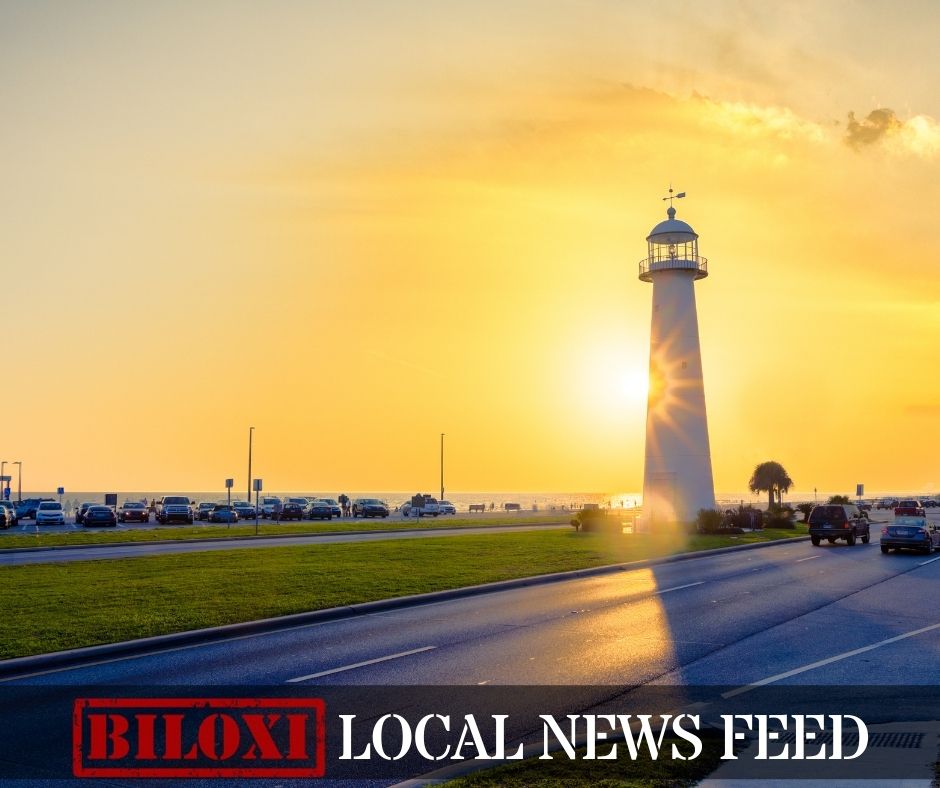News from the South - North Carolina News Feed
Is Buncombe County a “sanctuary” for undocumented residents? • Asheville Watchdog
Part two of three
Asheville and Buncombe County officials face a dilemma of enormous consequences.
If they refuse to cooperate fully with the Trump administration’s orders to deport millions of unauthorized immigrants nationwide, the president has threatened to cut off access to all federal funds to the storm-ravaged city and county, and instructed the attorney general to pursue possible legal action against local officials. The loss of potentially hundreds of millions in federal assistance could bankrupt the city and county, cripple local social and legal justice agencies, and significantly delay recovery from Helene.
If they allow local law enforcement to fully cooperate with federal Immigration and Customs Enforcement agents in deporting potentially thousands of local residents, they and their constituents will incur huge social, cultural, and economic costs, and they will destroy whatever trust the immigrant community has with the police.
Coming in Part III: “I love this country, and I want to stay here.”
“It’s hard to figure out what a winning position here is,” Western Carolina University political scientist Chris Cooper said. “If you ‘stand up’ to the federal government and to ICE, you might make the citizens of Asheville happy, but you are going to run the risk of running afoul of the federal government in general and Donald Trump in particular.”
Trump has visited Asheville twice in recent months, once during the campaign and again, on Jan. 24, as president. Trump visited the disaster zone in Swannanoa, east of Asheville, both times.
“If Trump ever thinks of Asheville, I doubt it’s fondly,” Cooper said. “He sees Asheville as a sign of things he’s fighting against. A loud and proud pushback against Trump would likely draw his ire, and his public ire.”
State law prohibits sanctuary cities
President Trump issued executive orders Jan. 20 that would deny all federal assistance to sanctuary cities. They ordered federal officials “to ensure that so-called ‘sanctuary’ jurisdictions, which seek to interfere with the lawful exercise of Federal law enforcement operations, do not receive access to Federal funds.”
The order also threatened legal action against “any such jurisdiction’s practices that interfere with the enforcement of Federal law.”
There are no sanctuary cities or counties in North Carolina, Brad Branham, city attorney with the city of Asheville, said.
“With regard to ‘sanctuary city’ status, it is important to be aware that such a designation by a local government is prohibited in this state,” Branham said, citing North Carolina General Statutes 160A‑205.2.
That statute specifically prohibits any city from enacting any policy, ordinance, or procedure that “limits or restricts the enforcement of federal immigration laws to less than full extent permitted by federal law.”
“This includes a restriction on a variety of activities that would frustrate law enforcement officials from gathering information,” Branham said. “In accordance with this statute, the city of Asheville has not designated itself a ‘sanctuary city.’”
Further, Branham said, “The city currently has no intention of taking action which would render us out of compliance with this law.”

Asheville Mayor Esther Manheimer did not respond to Asheville Watchdog’s questions about what steps the city is taking in preparation for the promised mass deportations. Instead, she issued a statement:
“Asheville has a long history of being a diverse and welcoming city,” Manheimer wrote. “We have repeatedly come together as neighbors to support one another in times of challenge or crisis, as witnessed in the aftermath of Tropical Storm Helene.”
Manheimer, an attorney, continued: “We are served, as a whole community, by a police department dedicated to public safety and the enforcement of existing state laws and ordinances. The Asheville Police Department (APD) neither operates a jail nor is authorized to enforce federal immigration laws. City Council and staff value our strong relationship of trust with all members of our community. “
Antanette Mosley, Asheville’s Vice Mayor, also issued a statement to The Watchdog: “We are facing challenges in our nation and questions those challenges create in our communities. We want to send our hearts out to anyone who does not feel safe and secure in their homes, businesses, or in our communities. We think of Asheville as a place that’s open and welcoming to everyone, and I hope that continues to be the case.”
Is Buncombe a sanctuary county?
The city of Asheville is wholly contained within Buncombe County, which in 2019 served notice that it would not cooperate with ICE. Buncombe Sheriff Quentin Miller was one of 11 county sheriffs to sign an open letter to state legislators opposing House Bill 10, the “Require ICE Cooperation” law, which was passed in 2024, vetoed by then-Gov. Roy Cooper, but overridden by the Republican-controlled General Assembly.
On Jan. 21, the Justice Department instructed U.S. attorneys offices to investigate and prosecute noncompliance with immigration enforcement initiatives.
The Watchdog asked Dena J. King, then-U.S. attorney for the Western District of North Carolina, if her office has been in touch with officials in Asheville or Buncombe. King, who was appointed by then-President Joe Biden, resigned Wednesday at the request of the Trump administration. Her office responded via a spokesperson: “The U.S. Attorney’s Office declines to comment beyond the information contained in the DOJ memo.”

In an extraordinary statement of defiance last week, following The Watchdog’s request for comment, Sheriff Miller wrote:
“As the Sheriff, I am not in charge of operating the churches or schools within this community but I am elected to ensure the safety and security of ALL the residents in Buncombe county. WE are a community of WE and because I have deputies positioned in schools as School Resource Officers, my stance is clear and strong that immigration enforcement is not allowed on our school campuses unless forced through a valid court order.”
“I have repeatedly spoken out against cooperation with ICE, saying federal immigration law is not the responsibility of local officers and damages law enforcement’s trust within the immigrant community,” Miller continued. “I also indicated in the past that I would not comply with just an ICE “detainer” to hold undocumented immigrants taken into custody, however the passing of HB10 amended that compliance to involve the issuance of both a detainer and an administrative warrant in order to hold someone undocumented in custody for up to 48 hours. As much as I have constitutional concerns about holding someone who is able and willing to post bond and subsequently be released, I do not make the laws, I only enforce the laws.
“The Buncombe County Sheriff’s Office (BCSO) will not be partnering with ICE to help enforce federal immigration laws beyond following HB10 which is only after someone has committed a crime. BCSO deputies will not be arresting and detaining persons to solely investigate immigration status in the absence of probable cause of an independent crime, that is racially profiling and unconstitutional.”
Noem, Hamilton meet with local leaders
In an email to Buncombe County Commission Chair Amanda Edwards, America First Legal, a foundation co-founded by Stephen Miller, now Trump’s deputy chief of staff and a Duke graduate, threatened legal action against any Buncombe or Asheville officials who resist cooperating with ICE.
“Federal law is clear: aliens unlawfully present in the United States are subject to removal from the country, and it is a crime to conceal, harbor, or shield them,” the email stated. “It is also a crime to prevent federal officials from enforcing immigration law.”
Edwards, who was in Raleigh for meetings related to Buncombe’s disaster recovery, declined a request to be interviewed on Buncombe’s preparations for possible mass deportations.
On Feb. 8, Edwards, Manheimer, and City Councilman Bo Hess spoke at a news conference in Swannanoa with Secretary of Homeland Security Kristi Noem, who on the previous day had visited Guantanamo Bay in Cuba to view progress in erecting tents capable of housing as many as 30,000 detainees.
Appearing Feb. 9 on CNN, Noem refused to rule out sending undocumented immigrants found guilty of non-violent offenses — like theft or shoplifting — to Guantanamo Bay.
Joining Noem at the Swannanoa event was Cameron Hamilton, acting administrator of the Federal Emergency Management Agency. Last October, Hamilton criticized FEMA for providing shelter, food, and medical aid to undocumented immigrants in North Carolina in Helene’s aftermath.
Edwards and Manheimer told The Watchdog that the topic of immigration did not come up in the meeting with Noem and Hamilton.
Asheville Police: ICE detainers ‘not relevant’
Trump’s Jan. 20 executive order authorized Noem “to the maximum extent permitted by law, and with the consent of State or local officials as appropriate,” deputize local sheriffs and police officers “to perform the functions of immigration officers in relation to the investigation, apprehension, or detention of aliens in the United States under the direction and the supervision of the Secretary of Homeland Security.”
However, Rick Rice, spokesman for the Asheville Police Department, said last week that “the APD is not authorized to enforce federal immigration laws.”
“We are here to protect and serve everyone, regardless of immigration status,” Rice said. “The Asheville Police Department’s focus as a law enforcement agency is to uphold and enforce criminal laws. Once an individual is in custody, they are processed by the Buncombe County Detention Facility, and APD is not involved in that process.”
“ICE issues detainers for persons in the custody of jails,” Rice said. “The Asheville Police Department does not operate a jail, so ICE detainers are not relevant to our work.”
On Jan. 22, North Carolina’s two Republican senators, Thom Tillis and Ted Budd, and U.S. Rep. Chuck Edwards, R-Hendersonville, introduced bills allowing crime victims to sue sanctuary cities that shelter undocumented migrants. Under the bills, Buncombe County could face civil lawsuits for failing to deport undocumented immigrants who later commit felonies.
According to the Center for Immigration Studies, a nonpartisan research organization, Buncombe, Chatham, Durham, Forsyth, Guilford, Mecklenburg, Orange, Wake, and Watauga counties all operate as “sanctuary jurisdictions.”
In his monthly newsletter to Buncombe County Republicans, chairman Doug Brown wrote that “recently appointed Border Tzar Tom Homan is so popular that retired agents are signing back up to help, and sanctuary cities will end.”
The Town of Woodfin, bordering Asheville on the northwest, has a sizable population of Latinos, primarily Hondurans and Guatemalans.

In response to a Watchdog question about how the town and its police are preparing for possible deportation actions, Town Manager Shannon Tuch issued a statement: “Municipal police departments are minimally impacted by changing federal priorities and immigration enforcement is anticipated to be managed by federal agencies. Should we be contacted by any federal agency, we would continue to perform our responsibilities as a local law enforcement agency, which includes ensuring the safety of all residents.”
James McAllister, the elected mayor of Woodfin, told The Watchdog, “You can quote me on this: It angers me that a number of residents of my town live in fear every day because of the color of their skin or where their parents might have been born. It angers me. We are a nation of immigrants. We’ve turned our back on them, and for that I am ashamed.”
“I am going to state publicly that, other than criminals with outstanding warrants, ICE has no business in this town,” McAllister said. “Our people work, they go to church, they send their kids to school, they pay taxes.”
“Leave us in peace,” McAllister said.
Shortly after learning that The Watchdog had spoken with McAllister, Tuch called The Watchdog to say the mayor was not authorized to speak on behalf of the Woodfin government. “He does not represent the views of the town,” Tuch said.
Asheville Watchdog is a nonprofit news team producing stories that matter to Asheville and Buncombe County. John Boyle is a staff reporter and columnist. You can reach him at (828) 337-0941, or via email at jboyle@avlwatchdog.org. Peter H. Lewis is The Watchdog’s executive editor. Email plewis@avlwatchdog.org. Linus Schafer-Goulthorpe is a student reporting intern. The Watchdog’s local reporting is made possible by donations from the community. To show your support for this vital public service go to avlwatchdog.org/support-our-publication/.
Related
The post Is Buncombe County a “sanctuary” for undocumented residents? • Asheville Watchdog appeared first on avlwatchdog.org
News from the South - North Carolina News Feed
White House officials hold prayer vigil for Charlie Kirk
SUMMARY: Republican lawmakers, conservative leaders, and Trump administration officials held a prayer vigil and memorial at the Kennedy Center honoring slain activist Charlie Kirk, founder of Turning Point USA. Kirk was killed in Utah, where memorials continue at Utah Valley University and Turning Point USA’s headquarters. Police say 22-year-old Tyler Robinson turned himself in but has not confessed or cooperated. Robinson’s roommate, his boyfriend who is transitioning, is cooperating with authorities. Investigators are examining messages Robinson allegedly sent on Discord joking about the shooting. Robinson faces charges including aggravated murder, obstruction of justice, and felony firearm discharge.
White House officials and Republican lawmakers gathered at the Kennedy Center at 6 p.m. to hold a prayer vigil in remembrance of conservative activist Charlie Kirk.
https://abc11.com/us-world/
Download: https://abc11.com/apps/
Like us on Facebook: https://www.facebook.com/ABC11/
Instagram: https://www.instagram.com/abc11_wtvd/
Threads: https://www.threads.net/@abc11_wtvd
TIKTOK: https://www.tiktok.com/@abc11_eyewitnessnews
News from the South - North Carolina News Feed
Family, friends hold candlelight vigil in honor of Giovanni Pelletier
SUMMARY: Family and friends held a candlelight vigil in Apex to honor Giovanni Pelletier, a Fuquay Varina High School graduate whose body was found last month in a Florida retention pond. Giovanni went missing while visiting family, after reportedly acting erratically and leaving his cousins’ car. Loved ones remembered his infectious smile, laughter, and loyal friendship, expressing how deeply he impacted their lives. His mother shared the family’s ongoing grief and search for answers as authorities continue investigating his death. Despite the sadness, the community’s support has provided comfort. A celebration of life mass is planned in Apex to further commemorate Giovanni’s memory.
“It’s good to know how loved someone is in their community.”
More: https://abc11.com/post/giovanni-pelletier-family-friends-hold-candlelight-vigil-honor-wake-teen-found-dead-florida/17811995/
Download: https://abc11.com/apps/
Like us on Facebook: https://www.facebook.com/ABC11/
Instagram: https://www.instagram.com/abc11_wtvd/
Threads: https://www.threads.net/@abc11_wtvd
TIKTOK: https://www.tiktok.com/@abc11_eyewitnessnews
News from the South - North Carolina News Feed
NC Courage wins 2-1 against Angel City FC
SUMMARY: The North Carolina Courage defeated Angel City FC 2-1 in Cary, ending their unbeaten streak. Monaca scored early at the 6th minute, followed by Bull City native Brianna Pinto’s goal at the 18th minute, securing a 2-0 halftime lead. Angel City intensified in the second half, scoring in the 88th minute, but the Courage held firm defensively to claim victory. Pinto expressed pride in the win, emphasizing the team’s unity and playoff ambitions. Nearly 8,000 fans attended. Coverage continues tonight at 11, alongside college football updates, including the Tar Heels vs. Richmond game live from Chapel Hill.
Saturday’s win was crucial for the Courage as the regular season starts to wind down.
https://abc11.com/post/north-carolina-courage-wins-2-1-angel-city-fc/17810234/
Download: https://abc11.com/apps/
Like us on Facebook: https://www.facebook.com/ABC11/
Instagram: https://www.instagram.com/abc11_wtvd/
Threads: https://www.threads.net/@abc11_wtvd
TIKTOK: https://www.tiktok.com/@abc11_eyewitnessnews
-
The Center Square6 days ago
What are data centers and why do they matter? | National
-
Our Mississippi Home6 days ago
Rolling Through History: The Comfort and Culture of Dumplings
-
Local News6 days ago
Steven Spielberg celebrates ‘awesome’ 50th anniversary ‘Jaws’ exhibition at Academy Museum
-
Local News5 days ago
DNA evidence found near scene of Charlie Kirk’s shooting matches suspect, FBI director says
-
News from the South - Florida News Feed6 days ago
Orlando restaurant owner invites artists to parking lot amid federal fight against street art
-
Mississippi News Video6 days ago
Summer like temperatures continue
-
Our Mississippi Home5 days ago
Family of Curious George Creators to Visit de Grummond in Hattiesburg
-
SuperTalk FM4 days ago
Hyde-Smith, Warnock team up to recognize Gold Star Families Remembrance Week

















































